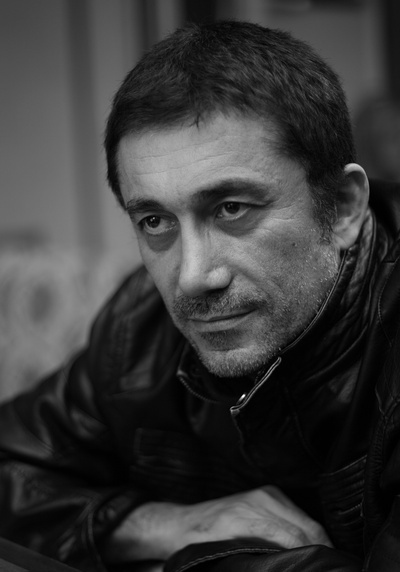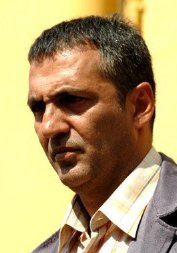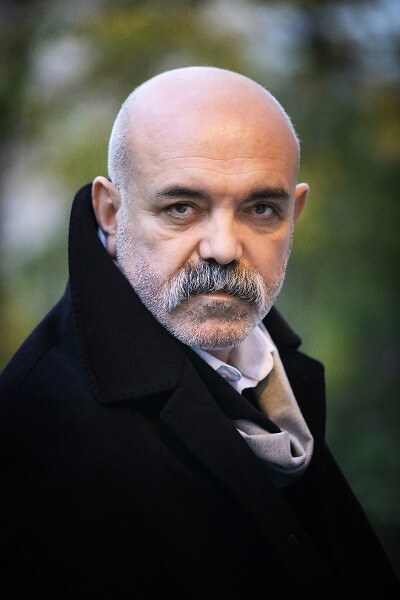三只猴子 Üç maymun(2008)
简介:
- 在一个阴沉的雨夜,准备参加竞选的老板塞维(厄康•吉赛尔 Ercan Kesal 饰)驾车撞死了一个路人。他极度恐惧,于是选择了找司机伊约(里法特•桑贾尔 Rifat Sungkar 饰)顶包,并许诺出狱后给他一笔钱。伊约的家境非常不好,孩子厌学,妻子海瑟(哈提斯•阿斯兰 Hatice Aslan 饰)也对他颇有微词,为了能够改善家庭环境,他毅然决定接受塞维的条件,充当替罪羊改善家人的生活。然而,事情却没有想象中那么简单。为了救出丈夫,海瑟希望塞维出面求情,并以身体交换作为筹码,这种超越底线的交易,最终让这对夫妻陷入了更加复杂的困境……
演员:
影评:
- 孟子道:“人之性善也,犹水之就下也,人无有不善,水无有不下。”这句话的意思就阐明,人的本性天生就是向善的,就好像水总是往低处流淌一样。对于土耳其的电影,埃米尔.库斯图里卡就已经在各大电影节做过完美的诠释。这部在戛纳电影节上斩获最佳导演的电影,与奥斯卡最佳外语片擦肩,实在可惜。土耳其的本土导演NURI.BILGE.CEYLAN在影片中运用了大量的近景,长镜头,局部的特写,大量镜头的淡入淡出,融入溶出展现了一个有关人性,有关政治,有关家庭的故事。影片情景交融,以景喻情,在视觉受到强烈冲击的同时,心境也受到强烈的震撼。电影的名字为“三只猴子”,日本宗教中有所谓《三猿像》,三只猴子分别捂耳,掩嘴,蒙眼,寓意不看,不听,不说。想必是从儒家中过去的,非礼勿言,非礼勿视,非礼勿听。电影的主要人物仅围绕在一名政客与一个家庭,在镜头的化入,划出,略带含蓄的表现了人物之间的情理关系和内心的挣扎。大量的室内近景,固定不动的摄影镜头,演员自然的出画,入画,张力十足。在渲染人物内心的心理挣扎的时候,采用了大量的局部特写。没有过分的人物冲突,却把整部影片的节奏情感渲染得淋漓尽致。几场室外的戏份,主景点主要以远处的实景为主,闪烁的灯塔,天边的乌云,远处的草原,都在关键的时刻烘托了情感。这部电影的亮点是在大量的影射的同时,依旧没有让人看到任何的希望。只是一个个的轮回,没有终点。
电影的开篇就完成了一个有悖法律的交易,政客驾车撞人后找到了他的司机代罪,理由是自己要参加议员的竞选,并且他的司机顶替不会有人察觉,条件是司机9个月的牢狱出来后将得到政客的一大笔钱。处理这段叙事的时候,摄影机主要以远处的实景为基调,闪烁灯光的灯塔就出现了2次,将两人内心的挣扎和矛盾随着闪烁而摇曳不定。交易的顺利达成,却没有展现警察的介入,这也是对土耳其政治的影射。这里是电影的第一个秘密。
司机进入监狱后,他的儿子一共去探望他两次,在这9个月的时间里,他的爱人没有去过一次,简单的铺垫了夫妻两人之间的感情,似乎在交易之前就已经暧昧甚少。儿子赋闲在家没有工作,在与社会的边缘青年殴架受伤后,母亲于心不忍而找到政客渴望提前拿到一些钱帮助儿子买车拉人。此时的政客应该是受到车祸的影响而竞选失败,在垂涎女人美丽的同时,而同司机的妻子发生了关系。政客的事故,政客的风度,政客的处事,显然不是一个打工的普通主妇所能抗拒得了的,在政客的恭维之下,二人顺理成章的云雨,却被司机的儿子发现。在处理这段的人物关系的时候,电影并没有着重展现冲突,只是演员的自然简短的对白和托以景物的烘托。精明的政客只是通过司机爱人的手机的铃声就已经确信他的恭维将会成功,手机铃声的在影片中的多次出现,导演并没有一带而过,而是浓墨重彩的处理了司机爱人的铃音:“我希望你爱的人却不爱你,我希望你被爱所伤就像它伤害我一样,我希望你朝思暮想却无法重聚,就像我一直不得重聚,我希望你的心会被融化,就像蜡烛一样,我希望绝望总在你门前,就像奴隶一样守护你,我希望你的心被偷走,就像货架上的商品一样,我希望你在你的激情里被窒息”电影到此为止矛盾已经铺开,就在儿子第二次去探望父亲的时候,由于前夜的醉酒而导致在车站呕吐,在回家换衣服的时候,目睹了母亲与政客的云雨,这个时候,镜头却对向了一把刀,显然,后来我们知道这只是个伏笔。电影中的第一个人物之间的关系冲突爆发,儿子厉声质问母亲,而母亲只是哭泣而没有承认,这也是影片的第二个秘密。
司机为政客工作过,显然他也会了解政客的为人,也依稀会有政客的圆滑与事故。在与儿子简短的交涉之后,镜头特写了两人的脸部,司机对于爱人的出轨也已经略有洞察。在拿到政客的钱后,母子二人没有对白,只是室内的近景,不动的物体来反衬彼此间矛盾的心理的关系,这个部分,最为经典的一幕出现了,在儿子的似梦似醒之间一个男孩的身影瞬间入画,逐渐清晰,也是最为超现实的一幕,作为一部故事电影,这个超现实的镜头组无非是大胆的尝试,在唤了一句哥哥后,又瞬间消失,此时,我们知道了这个家庭的另外的秘密。这段人物的心理矛盾已经过度到极致,知道秘密的人,拼命的保守着,是对是错。谁也不清楚。直到后来的家庭照片,以及司机出来后的第一件事就去墓前探望小儿子,和司机最后心理抉择的时候的小儿子的再度出现,已经告诉了我们,这个秘密,家里面无人提及,却已经深刻的烙印在每个人的心理,这也是影片的第三个秘密。
在司机从监狱里面出来后,政客断绝了与女人的关系,可是,殊不知女人已经身陷政客的情欲之中,显然,司机已经直到了自己的爱人与政客的关系,彼此间已经相当疏远,彼此间的对白充满着伤害和愤怒,影片的第二个冲突显现,女人在浴室洗澡,手机铃音二度想起,这组镜头步步紧逼,水声,铃声混为一体,紧凑,韵味十足。司机最终接起了电话,矛盾再度激化,一个平凡的家庭已经不再是家庭了,儿子操守着不能告诉父亲的秘密,女人操守着不能告诉任何人的秘密,司机也没有把这层纸捅破,彼此之间的三只猴子,承受了太多的“三猿像”文化,女人在床上睡觉,而男人就去沙发,彼此间的隔阂已经不单是那些不能说的秘密了,司机从政客手里拿到了全额的钱,政客并没有扣除之前付给司机爱人的钱,这对司机来说是莫大的耻辱,显然,那些钱,是你的女人用她的身体换来的,政客在适当的时间退出了这个情欲的游戏,而女人不会,在家庭里面的层层隔阂之后,她把一切希望寄托于精明事故的政客身上,最傻的幻想,在政客的冷语相逼后,她的付出,她的尊严,都已经无处是从,殊不知,她已经爱上了政客,与其说是爱,倒不如是逃避,在这段冲突的表现手法上,依旧是采用大量的室外实景,远景的大海,天空都是阴翳的色彩,在女人苦苦的告白之时,一双眼睛正注视着发生的一切。第四个难以切齿的秘密更加无力。
政客死了,与法国电影《别告诉任何人》同加拿大电影《边做边摄》如出一辙,为了家庭的尊严,真的会有人不惜做任何事情。就在儿子告诉父母的真相之后,家庭并没有真正的团结起来,儿子做的事情尽管之前略有铺垫,但还是把情节推向了精彩 ,在第五个秘密揭开之时,摄影机先从近景开始,逐渐向远景过度,女人坐在房檐上,欲跳欲止,可能男人真的希望她跳下去,可是最终,他的一句:“下来吧,别傻了”,这就足够表现出他的豁达么?男人想到了流浪汉,以政客的口吻达成了他们之间的交易,人都是自私的,最后的一个秘密来得更为深刻!
电影在最后景物镜头的处理上叹为观止,一望无际的大海,远处深邃的乌云,伴随着阵阵的雷雨之声,男人拿幽暗的眼神,电影嫣然落幕。三只猴子,影片的三个人,他们失去的到底是什么,不得由知。
《Three Monkeys[三只猴子]》谚语的含义与引申义
by @xinl.ve 090226
玩笑一把,先:
我国教育部对以下9个成语解释作出了正式的的纠正 ,现公之于众:
1.【知书达礼】仅知道书本知识是不够的,还要学会送礼;
2.【度日如年】特指当公务员的日子,非常好过,每天象过年一样;
···
更多请搜索
土耳其电影《Three Monkeys[三只猴子]》,借用流传于西方的谚语Three Wise Monkeys[三个智猴]的典故。
先找些资料解释下:
The three wise monkeys (Japanese: 三猿, san’en or sanzaru, or 三匹の猿, sanbiki no saru, literally “three monkeys”) are a pictorial maxim. Together they embody the proverbial principle to “see no evil, hear no evil, speak no evil”. The three monkeys are Mizaru, covering his eyes, who sees no evil; Kikazaru, covering his ears, who hears no evil; and Iwazaru, covering his mouth, who speaks no evil.
这段英译据说源于佛教训诫。在日本一座幕府时代的寺院里,就有一尊名为“三个智猴”的雕像——一个双手捂眼做惨不忍睹状(see no evil)、一个双手捂嘴做噤若寒蝉状(speak no evil)、一个双手捂耳做置若罔闻状(hear no evil)。
对应着“See no evil, hear no evil, speak no evil。”的中文翻译是子曰“非礼勿视,非礼勿听,非礼勿言。”(关于起源的争论,如“有学者认为,日本这尊雕像实则归功于中国高僧,正是由于高僧们东渡日本传播中国古文化,日本才有了“智猴”之说。”—-不在本文的讨论范围。)
猴子在中国的语境里不外乎几种:“齐天大圣”一种,“猴子屁股坐不住”一种,“朝三暮四”一种,“抓耳挠腮坐立不安”也为一种。原本考虑借用最后一种意思,确定文章题目是《挠人心的猴子》,有那么一点接近电影主题,但还不够契合。搜索和IMDB的结合,谚语“三只智猴”的含义是“若要洁身,首先要远离邪恶”,而电影《Three Monkeys[三只猴子]》在这个语意的基础上,进行了再发挥,引申意可能都不以确定,基本上颠覆后的再创作。
视而不见,听而不闻,知而不言,土耳其的工薪家庭困于生活时的无奈选择。担任专职司机的父亲知晓了老板的交通肇事,未去检举,而听从其顶罪的安排(在这之前,还有路上经过的其它车辆,看到了因车祸而受伤的行人而未立即给予帮助的场景),此为视而不见。原本外出的儿子,因事折返回家,听到母亲房间的异常声音,但没有现场揭穿,此为听而不闻。基本确定另外的男人在父亲坐牢时和母亲有染,但探望父亲时,没有将真相告知父亲,即便监狱里的父亲觉得异常,此为知而不言。
主动与恶隔绝的原意,被发展为面对艰难和重责时的装聋作哑和不得不当其不存在。困窘的生活,脆弱的家庭关系,善恶二分法下暂时只有父亲是清白的。极度现实主义的电影里,出现猴子模样的小孩(夭折的另一孩子),走入儿子朦胧泪眼睛,也会把手缠过心绪难安的父亲肩头。
选择继续艰难的生活,还是一次畅快的分崩离析后争回面子?明知生活不易的儿子,可以花大钱买一辆面子有光的汽车,做出杀死父母之间的第三者力求“表面上”解决问题也属正常。普通人生活的悲剧,电影停留在这个时候,寒意和含义都足够深刻。
“智猴”的谚语里,其实还有第四只猴子。Sometimes there is a fourth monkey depicted with the three others; the last one, Shizaru, symbolizes the principle of “do no evil”. He may be covering his abdomen or crotch, or just crossing his arms.子曰里也同样还有“非礼勿动”。“勿作恶”,最为无辜和清白的父亲,为了拯救犯罪的儿子,寻找他人替儿子顶罪,与当时老板找他顶交通肇事罪一般。“三只猴子”的谚语含义已经完备,新一轮的故事即将上演?
2008年第61届戛纳的最佳导演奖影片,代表土耳其参选奥斯卡最佳外语片的电影,延续了艺术电影的漫长,电影的韵味不在视觉表现的故事,在平日生活场景后的思考。
连不上的官方网站:
Three.Monkeys.2008.LIMITED.DVDRip.XviD-AEN- 在看完电影之后,我问自己为什么如此普通的故事能够赢得戛纳电影节的青睐,什么是最佳导演。最佳导演就是能够将一个简简单单的故事拍出诗意的能力,而这恰恰是土耳其导演锡兰在这部影片中所做到的。
不同于《革命之路》中演员充满激情和爆发力的表演,这部影片的表演是内在化的,是依托于导演的摄影之上的。除了丈夫和妻子一场直接的争吵以外,全片没有太大的戏剧冲突。然而,锡兰通过大量的特写镜头来捕捉演员们表情和眼神细微的变化。在处理人物关系的时候,导演尽量简洁演员之间表演的痕迹,而是通过摄像机来确认两人的关系和心理状态。大量的室内近景占据了影片,且镜头主要以固定镜头为主,而演员却自由的出入画,说明本片的表演是依靠空间的来表现的。几场室外景多以远景为主,用来烘托电影气氛并渲染人物情绪,如同《乌扎克》导演对于天空的表现能力极具美感。然而,在妻子与老板最后一次见面的一场戏中,人物通过夸张的肢体语言和语言对白完成在大全景下的出色表演。摄影出身的导演锡兰在片中展现了卓越的镜头表现能力,电影多以近景和特写为主展现人物内在情感变化,辅以辽远萧瑟的大远景渲染气氛。影片摄影突出却并不喧宾夺主,扎实的人物表演和细节刻画使得一个本来平淡的故事具有一种纵向的寓言式的深沉。
《三只猴子》片名出自日本宗教中的“三猿像”,画中三只猴子,一只捂耳,一只掩嘴,一只蒙眼,喻意“不看、不听、不说”。影片所表现的是潜藏的秘密对于家庭成员的伤害。电影开头和结尾两次抵罪的行为本身就是掩饰秘密的过程,而贯穿全片的妻子的偷情行为也是家庭的秘密,而秘密的被揭露则导致了悲剧的爆发。而家庭内在的秘密则在于那个被淹死的小孩,尽管没有人提起过,但是儿子和父亲两人的幻想以及一张照片透露了这个先前的家庭创伤。而如果他们期望能够度过现在这个难关,只能够像对待那个死去的幼子一样,对于妻子偷情和儿子谋杀的事情保持“不看,不听,不说”的态度。同时“不看,不听,不说”的三种态度也造成了三人之间不可弥补的隔阂,每个人都试图掩饰真相,但真相却不可避免的泄露,而对每个人造成伤害。 - 记得上大学那会儿,自己独立做短片,除了热情之外,一无是处,当时我那狗屁学院派的老师看着我的短片殷切的训导我:“你连最基本的电影套路都不遵守,何以去做短片?”那位老师口中所谓的电影套路无非就是指:a.一部电影,每个画面的平均停留时间不能超过6秒;b.没有运动镜头的电影只能是一部幻灯片。记得那时候,看的最多的电影就是北影考研的必看电影,前前后后看了有几百部。粗略归纳一下,这几百部电影大概有这么几个类型:a.类似于芙蓉镇、青春祭、我这一辈子等5代前作品;b.类似于红高粱、人到中年、北京杂种等五代六代作品;c.类似于一条安达鲁狗、第七封印、雾中风景等欧洲大师作品;d.类似于彗星美人、关山飞渡、大独裁者等好莱坞经典作品;e.类似于两个人的车站、莫斯科不相信眼泪、远山的呼唤等译制经典。那段时光不仅充实,而且也或多或少的让我看到了一种距离。但是当我有了自己做短片的念头之后,脑袋里闪烁在记忆中的电影绝并非是这些,而是在力争考研期间用以调节情绪的一些框架外作品:我自己的爱达荷、遇人不熟、命运、人体雕像、远方... ...这些框架外的作品构筑我的灵感,触动了我的情绪,召唤了我的共鸣。无法拿自身与Nuri Bilge Ceylan相比,只是一直试图为自己那几年的动力与灵感寻找一个有力的说服点,直到昨天深夜看完《三只猴子》。也许这个形容很刻意,但至少这是我第一次刻意。
电影就是这样,没有任何约定俗成的理论或者体系可以亘古不变的流传至电影死去,当一种套路被运用到巅峰运用成接近真理之时,必然会产生一些力争突破这种套路的电影人,比如Nuri Bilge Ceylan。据不完整记录,Nuri Bilge Ceylan大学里学的是电子工程,这跟许多大师一样,都是半路出家拍电影一举成名。之后Ceylan在伦敦度过了一年漫无目的、不开心的生活:做过饭店的服务生、光顾小书店去看书、天天看电影,转折结点是在他服兵役期间,Ceylan读了波兰导演罗曼·波兰斯基的自传后,退役去伦敦、伊斯坦布尔攻读电影专业。创作冲动促使Ceylan在大学第2年便离开校园,开始以摄影师的身份融入电影行列。一直以来,Ceylan都独立制作小成本电影,身兼数职,包括演员也多是非职业的,这其中令我印象深刻的是《远方》的主演,Ceylan的亲侄子,在拍完《远方》之后英年早逝。《远方》不是那种看上一遍就会喜爱的电影,《远方》更像是一张新民谣专辑,在你特定的时候扮演着你最需要的情绪。《三只猴子》则在远方的基础上加重了这种特定情绪的冲击力与摧毁力。
关于《三只猴子》的剧情,不必赘言,一只简单到空虚的故事,类似于《远方》,都是那种大城市里一两个生活在冷色调屋子里的人在平凡生活中遇到的几件事。而Ceylan电影的亮点也正在于此:冷色调、一两个人、屋子、平凡。可能是因为摄影师出身的缘故,Ceylan的电影色彩与画面构图都是那么的lomo,像极了经过胶片相机拍摄在暗房里刷出来的照片,而且对于这种特质的运用达到了一种偏执极端的高度,类似于07年的瑞典电影《you living》。一两个人,不论是《远方》里的通片2人撑破了戏,还是《三只猴子》里前后出现的4、5个人的交叉感染,Ceylan很明显拒绝群戏与凌乱的人物架构。屋子,在一间看起来比人高不了多少看起来略显狭小的房间里,Ceylan将各种镜头运用到了炉火纯青的地步,景深、特写、长镜头在Ceylan的电影里都显得那么的夺目招眼。平凡,不仅仅在于故事,更在于人物,还关乎到画面,画面的平凡在于色彩感的模糊,在于时间流动的模糊,在于空间感的模糊。如果观看足够细致,更为叫绝的魅力在于蒙太奇、运动镜头的缺失,6秒定格、运动感在这部电影中完全被抛弃,这种打破常规的方式不是第一次在银幕中看见,但绝对是第一次让人意识到这是一种特质。
看完《三只猴子》之后,躺在床上,恰好看见了挂在床边的一只吊件:三猴木刻,这是去年一位出家人送给我的礼物,当时这位师傅对我说了三句话:你刚毕业,出去工作,帮不了你什么忙,唯有一句忠告“少看,少听,少说”。后来查资料的时候,才知晓这部电影名字的寓意来自于日本的佛学,概括为:“不看,不听,不说”。想到这个,会然一笑,似乎明白了这部电影剧情的意指。明白了但却找不出合适的文字诉注,纠结之时,看见一段文字,叙述的狠好狠到位,特引此作结:“女人起初得意的动作神态够讽刺,事后对男人不依不饶对丈夫沉默装B,既蠢又贱.弟弟的2次出现是幻象,丈夫第一次看她试图跳楼是不是也是幻象.之后他退回去贴着墙伴随着火车嗡鸣挣扎纠结矛盾出满身的汗来(之前儿子也是满身的汗滴滴滴滴)借她口知儿子的朋友圈,然后打架那张稍显夸张一脸划痕血印的脸到抽母亲嘴巴到去"做他",层层铺垫毫不突兀.将近结尾丈夫夜里下楼来异常安静几分钟的时间里我生怕那女人真怕得一声摔下来直到那只猫拐过来我高估了她.选址很好眼部特写表情特写狠到位”。






